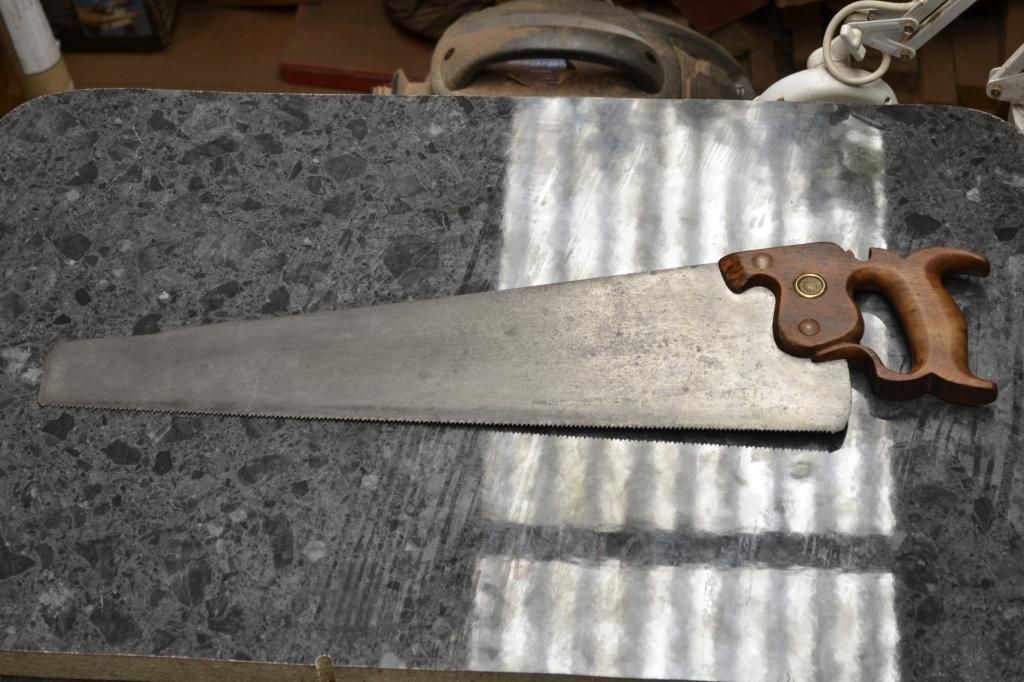swagman
Established Member
With the inclusion of the English pattern traditional lambs tongue within its shape my personal preference does favor the No.7 handsaw over that found within the Disston's D7 series handsaws.
http://www.disstonianinstitute.com/7page.html
The following No.7 Panel Saw was owned by my late father. It has the H DISSTON & SONS medallion & etch that allows me to date this saws production to circa 1900 -1917.
It has a 22 inch saw plate; and is 10 ppi; with a crosscut tooth.


http://www.disstonianinstitute.com/7page/7etch3.jpg
This saw has seen many years of service during my fathers working career as a certified Carpenter & Joiner; commencing at an early age as an apprentice in Scotland during the early 1950s under the tutelage of his employer, a Master Craftsman of that era.
The following compares the difference in the cut of the saw plate within the saw handle of this 1900-1917 circa Panel Saw to that of a D8 Panel Saw of a later 1917-1928 circa.


This final photo is of my fathers Panel Saw after its been resharpened, and a new stained finish applied to the handle.

regards Stewie;
http://www.disstonianinstitute.com/7page.html
The following No.7 Panel Saw was owned by my late father. It has the H DISSTON & SONS medallion & etch that allows me to date this saws production to circa 1900 -1917.
It has a 22 inch saw plate; and is 10 ppi; with a crosscut tooth.


http://www.disstonianinstitute.com/7page/7etch3.jpg
This saw has seen many years of service during my fathers working career as a certified Carpenter & Joiner; commencing at an early age as an apprentice in Scotland during the early 1950s under the tutelage of his employer, a Master Craftsman of that era.
The following compares the difference in the cut of the saw plate within the saw handle of this 1900-1917 circa Panel Saw to that of a D8 Panel Saw of a later 1917-1928 circa.


This final photo is of my fathers Panel Saw after its been resharpened, and a new stained finish applied to the handle.

regards Stewie;




